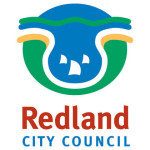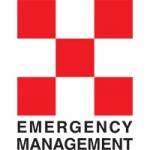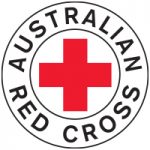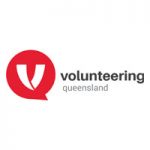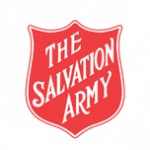Local Government
The Disaster Management Act 2003 details a range of functions and responsibilities for local government to ensure that it meets its statutory obligations. Section 80 of the Act requires local government to undertake the following functions:
a) to ensure it has a disaster response capability;
b) to approve its local disaster management plan prepared under part 3 of the Act;
c) to ensure information about an event or a disaster in its area is promptly given to the district disaster coordinator for the district in which its area is situated;
d) to perform other functions given to the local government under the Act.
In addition to these functions; Section 29 of the Act specifies that local government must establish a Local Disaster Management Group (LDMG) for the local government’s area.
Functions of the Redland City LDMG
In accordance with Section 29 of the Act, Redland City Council has established an LDMG for its local government area.
The following functions of the Redland City LDMG are prescribed under Section 30 of the Act:
(a) to ensure that disaster management and disaster operations in the area are consistent with the State group’s strategic policy framework for disaster management for the State;
(b) to develop effective disaster management, and regularly review and assess the disaster management;
(c) to help the local government for its area to prepare a local disaster management plan;
(d) to identify, and provide advice to the relevant district group about, support services required by the local group to facilitate disaster management and disaster operations in the area;
(e) to ensure the community is aware of ways of mitigating the adverse effects of an event, and preparing for, responding to and recovering from a disaster;
(f) to manage disaster operations in the area under policies and procedures decided by the State group;
(g) to provide reports and make recommendations to the relevant district group about matters relating to disaster operations;
(h) to identify, and coordinate the use of, resources that may be used for disaster operations in the area;
(i) to establish and review communications systems in the group, and with the relevant district group and other local groups in the disaster district of the relevant district group, for use when a disaster happens;
(j) to ensure information about a disaster in the area is promptly given to the relevant district group;
(k) to perform other functions given to the group under this Act;
(l) to perform a function incidental to a function mentioned in paragraphs (a) to (k).
Business and Meetings of the Redland City LDMG
In accordance with Section 38 of the Act, Conduct of business and meetings:
(1) A disaster management group must conduct its business, including its meetings, in the way prescribed by regulation.
(2) Subject to a regulation made under subsection (1), a disaster management group may conduct its business, including its meetings, in the way it considers appropriate.
Responsibilities of Members of the Redland City LDMG
Functions, roles and responsibilities are in accordance with those contained in the Queensland State Disaster Management Plan (where applicable).
Redland City Council
Responsibilities
- Coordination of the Redland Local Disaster Management Group
- Ensure it has a disaster response capability (S.80)
- Approve its local disaster management plan (S.80)
- Ensure information about an event or a disaster in its area is promptly given to the District Disaster Coordinator (DDC)
- Provide Council resources necessary to meet statutory obligations
- Manage damage assessment on behalf of LDMG
- Provide and manage resources to support evacuation centres
- Ensure business continuity of all Council services during and following event
- Support the State Emergency Service (SES) in partnership with state.
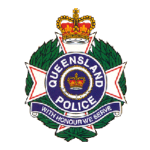
Queensland Police Service
Functions
- Search & Rescue
- Mass fatality management (in conjunction with Queensland Health)
- Disaster Victim Identification.
Role
To enhance the safety of the community by assisting them to prepare for, respond to and recover from disaster events by providing support and guidance to disaster management groups at all levels.
Responsibilities
- Preserve peace and good order
- Operational responsibility for first response to terrorism
- Providing executive support to the Queensland Disaster Management Committee
- Coordinating disaster response operations for the Queensland Disaster Management Committee through the State Disaster Coordinator
- Provide the Chair and executive support to the State Disaster Coordination Group
- Provide the Chair (DDC) and executive support to District Disaster Management Groups
- Managing and coordinating the business of District Disaster Management Groups
- Develop and facilitate a program of disaster management themed exercises
- State Search and Rescue authority and responsible for the coordination of search and rescue operations
- Activate and coordinate the operation of the State Disaster Coordination Centre
- Provide support to Local Disaster Management Groups
- Manage the registration of evacuees and inquiries in partnership with Red Cross
- Provide traffic management, including assistance with road closures and maintenance of road blocks
- Conduct coronial investigations
- Coordinate the review of the Queensland State Disaster Management Plan
- Provide a Disaster Victim identification capability.
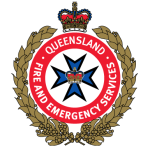
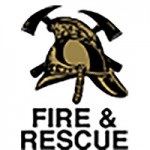
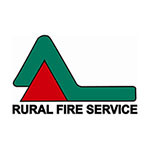
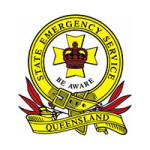
Queensland Fire and Emergency Services (QFES)
Emergency support functions
- Develop and distribute community warnings, for bushfires, structural fires and chemical incidents
- Emergency supply to communities
- Resupply of communities, properties and individuals
- Damage assessments of structures
- Disaster Assistance Response Teams
- Rescue disciplines of:
- swift water
- vertical
- trench
- confined space
- road traffic crashes
- structural collapse
- Advice and support to local, district and state groups
- Ensuring SDCC operational readiness
- Facilitation of emergency alert and SEWS.
Role
Ensure the safety of people and property in Queensland through the provision of effective prevention, preparation, response and recovery activities across a range of emergency situations through the capabilities of Fire & Rescue, Rural Fire Service and State Emergency Service.
Responsibilities
- Primary response agency for structural, bushfire and chemical / hazmat incidents
- Provide advice, chemical analysis and atmospheric monitoring at relevant incidents
- Provide mass and technical decontamination capability
- Provide rescue and search functions and perform other operations to help and protect injured persons from danger or potential danger
- Distribute and develop (where primary agency) warnings to disaster management stakeholders and communities
- Facilitate and authorise Emergency Alert campaigns to provide advice and warnings to communities affected by disasters and emergency situations
- Prepare guidelines to inform local governments and district and state groups of disaster management related matters
- Establish and maintain arrangements between the state and the Commonwealth about matters relating to effective disaster management
- Ensure disaster management and disaster operations are consistent between plans, policies, standards and guidelines
- Ensure that persons performing functions under the Disaster Management Act 2003 in relation to disaster operations are appropriately trained
- Provide advice and support to the state group and local and district groups in relation to disaster management and disaster operations
- Ensure the collaborative development of the Queensland Emergency Risk Management Framework and the state-wide risk assessment
- Ensure the SDCC is maintained to a state of operational readiness
- Maintain situational awareness and reporting capability and capacity through the SDCC Watch Desk
- Lead the planning and logistics capabilities in the SDCC and support the staffing models of other capabilities
- Emergency supply acquisition and management of supplies and services in support of disaster operations
- Resupply of essential goods (food and basic commodities) to temporarily isolated communities, properties and individuals
- Ensure the capability and capacity of Disaster Assistance Response Teams (DART) to assist communities affected by disasters or emergency situations
- Undertake damage assessment function (residential and commercial structures) as soon as practical post disaster / emergency situation and provide findings to disaster management stakeholders.
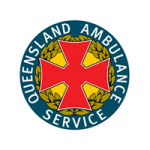
Queensland Ambulance Service
Emergency support functions
As outlined in the roles and responsibilities section below.
Role
- Provide, operate and maintain ambulance services and service delivery during rescue and other related activities. This includes protecting persons from injury or death, whether or not the individuals are sick or injured
- Provide transport for persons requiring attention at medical or health care facilities, to participate with other emergency services in counter disaster planning and to coordinate all volunteer first aid groups during the disaster.
Responsibilities
- Provide, operate and maintain ambulance services
- Access, assess, treat and transport sick and injured persons
- Protect persons from injury or death, during rescue and other related activities
- Coordinate all volunteer first aid groups during major emergencies and disasters
- Provide and support temporary health infrastructure where required
- Collaborate with Retrieval Services Queensland in the provision of paramedics for rotary wing operations
- Participate in search and rescue, evacuation and victim reception operations
- Participate in health facility evacuations
- Collaborate with Queensland Health in mass casualty management systems
- Provide disaster, urban search & rescue (USAR), chemical hazard (Hazmat), biological and radiological operations support with specialist with specialist logistics and specialist paramedics.
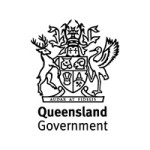
Queensland Health
Emergency support functions
- Public health, mental health and medical services
- Emergency aeromedical retrieval
- Mass casualty management
- Mass fatality management.
Role
Coordinate and manage the health aspects of a disaster or emergency incident across the full spectrum of prevention, preparedness, response and recovery including health advice to the community, public health, clinical care, forensic support and mental health.
Responsibilities
Lead agency
- Lead agency for response functions of public health, mental health and medical services, mass casualty management. mass fatality management including victim identification (with QPS) and emergency medical retrieval
- Provide health emergency incident information
- Primary agency for heatwave, pandemic influenza, biological and radiological incidents.
Representation
- State representation at Australian Health Protection Principal Committee and associated sub-committees including Communicable Diseases Network Australia (CDNA), Public Health Laboratory Network (PHLN) and the National Health Emergency Management Standing Committee
- Department of Health participation in appropriate and relevant state level groups and committees
- Hospital and Health Service participation in LDMG and DDMG activities.
Preparedness
- Develop health-focused disaster and emergency preparedness. response and recovery plans
- Develop and maintain disaster and emergency health response capability and capacity
- Implement business continuity plans and arrangements to maintain health services during disasters and emergencies
- Work across the health sector including aged care facilities, private facilities, primary health and community care providers to ensure ‘whole of health’ arrangements are in place.
Response (including support functions)
- Coordinate the state level health response through maintenance and activation of the State Health Emergency Coordination Centre
- Provide health disaster and emergency incident information to the public and disaster management stakeholders
- Health services – clinical and forensic
- Clinically coordinate aeromedical transport and emergency medical retrieval (with QAS) and provide membership to the SDCC activation cell when activated
- Clinical response to mass casualty management (with QAS)
- Forensic and scientific health services to mass fatality management and terrorism (with QPS)
- Recovery mental health support to affected communities (with DCDSS)
- Public health and environmental health advice and support to local governments and affected communities and industries
- Environmental health risk assessment advice to other agencies, local government and industries
- Messaging on public health risks to affected communities
- Communicable disease surveillance and response arrangements.

Department of Education (DoE)
Emergency support functions
- Provision of departmental buildings that can be transitioned to cyclone shelters, places of refuge and evacuation centres
- Support communications prior to, during and after an event.
Role
Lead, manage and coordinate the department’s planning, preparation, response and recovery from disasters and emergencies.
Responsibilities
- Maintain the safety and wellbeing of students, staff and volunteers who work or participate in DoE schools, institutions and workplaces
- Ensure that all state schools, regional offices and other workplaces have a documented emergency response plan
- Ensure that all DoE regional offices and key workplaces have a tested business continuity plan
- Ensure that DoE is prepared to respond to and recover from, disasters and emergencies
- Facilitate the return of affected state schools to normal operations as soon as safe and practicable following an event
- Facilitate the transition of DoE facilities to cyclone shelters, places of refuge and evacuation centres as required or directed. (Maintenance commitments for places of refuge and evacuation centres and other additional information can be found at qed.qld.gov.au/emergency-management)
- Contribute to the state-wide response to disasters and emergencies as required
- Provide workplace health and safety advice, information and awareness about electrical, chemical, asbestos and general
- safety matters in the lead up to, during and following cyclones, storms, floods and other disasters.

Department of State Development, Tourism and Innovation (DSDTI)
Emergency support functions (for previously named Department of State Development, Manufacturing, Infrastructure and Planning – DSDMIP)
As outlined in the roles and responsibilities below.
Role
Lead agency for economic recovery during a disaster event, playing a key role in assisting local government, business and industry in resilience and recovery strategies. During a disaster, DSDMIP chairs the Economic Recovery Group (ERG) which provides strategic advice to the Queensland Government and relevant stakeholders on economic impacts, and develops and implements immediate response actions The ERG also coordinates input from relevant departments, local government and industry bodies to develop a longer-term economic recovery plan.
Responsibilities
- Initial situation economic impacts on jobs, business and industry in disaster affected areas
- Initial situation on reporting on economic impacts of local government areas (LGAs)
- Provide support to relevant authorities restoring power, water and communications in the affected communities for the resumption of economic activity
- Ongoing coordination and reporting on the economic recovery tasks for the life of the recovery plan
- Chair the Functional Recovery Group Leadership Board
- Support the implementation of the State Planning Policy (SPP) which outlines 17 state interests to be considered in development assessment and in every planning scheme across Queensland, and includes the state interest of natural hazards, risk and resilience
- Prepare and implement regional plans that identify and interpret relevant matters of state interests for a particular region, including natural hazards, risk and resilience, to achieve desired outcomes
- Work collaboratively with the Department of Housing and Public Works (DHPW) on the development and implementation of the Queensland Digital Infrastructure Plan, which forms part of the State Infrastructure Plan.

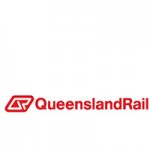
Department of Transport and Main Roads (DTMR)
Emergency support functions
- Transport systems
- Roads and transport recovery.
Role
Coordinate the effective and efficient delivery of state-controlled road and transport recovery and reconstruction activities. DTMR also engages directly with industry and the community on the recovery and reconstruction phases following the natural disaster and leads the planning and implementation of the roads and transport functional line of recovery activities.
Responsibilities
- Provide information and advice regarding the impact of event on road, rail, aviation and maritime infrastructure
- Assist with the safe movement of people resulting from mass evacuation
- Maritime Safety Queensland (MSQ), a branch of DTMR), is responsible for ensuring maritime safety for shipping, and is the lead agency for dealing with ship-sourced pollution that impacts, or is likely to impact, Queensland coastal waters and the waters of the Great Barrier Reef World Heritage Area and Torres Strait. The arrangements for mitigating the effects of ship-sourced pollution on Queensland’s marine and coastal environment are described in the Queensland Coastal Contingency Action Plan (QCCAP). QCCAP is recognised as a hazard specific plan.
- Enable an accessible transport system through reinstating road, rail and maritime infrastructure
- Ensure the capability of logistics-related industries is appropriately applied to disaster response and recovery activities.

Department of Communities, Disability Services and Seniors (DCDSS)
Emergency support functions
Human and social recovery.
Role
Functional lead agency for planning, coordination and implementation of human and social recovery in Queensland.
Responsibilities
- Coordinate and/or provide human and social recovery information and/or resources to support Local and District Disaster Management Groups
- Enable access to information and/or coordinated government and non-government human and social recovery services through a range of service delivery channels which may include:
- promotion and/or referral to local community services
- 1800 recovery hotline
- grants portal
- multi-agency recovery hubs
- community recovery information & referral centres
- case coordination of vulnerable persons
- outreach teams.
- Purchase extraordinary human and social recovery services when local capacity is exhausted
- Facilitate matching and enabling of EV CREW registered volunteers
- Enable the matching of donated goods and offers of assistance
- Enable access to emergency and temporary accommodation assistance
- Administer SDRA & DRFA financial relief measures for eligible individuals
- Manage the Queensland Government’s Community Recovery “Ready Reserve”.

Department of Employment, Small Business and Training (DESBT)
Emergency support functions
Under review.
Role
Under review.
Responsibilities
Under review.

Department of Agriculture and Fisheries (DAF)
Emergency support functions
Containment and eradication of emergency animal and plant diseases, plant and animal pests, invasive plants and animals, residue and contaminates in agricultural commodities and emergency animal welfare incidents.
Role
Lead agency for containment and eradication of emergency animal and plant diseases and pests. DAF also provides advice on agriculture, fisheries and forestry in a disaster event.
Responsibilities
- Coordinate efforts to prevent. respond to, and recover from plant and animal pests and diseases and invasive plants and animals
- Provide advice on livestock welfare
- Collaborate with stakeholders with shared responsibilities and other organisations to facilitate prevention, preparedness, response and recovery strategies and priorities for animal welfare management within a community
- Provide advice in relation to agriculture, fisheries and forestry disaster impacts
- Coordinate destruction of stock or crops in an emergency pest / disease situation
- Administer NDRRA relief measures including agriculture industry recovery operations as required
- Lead the reporting on the disaster impact assessments on the agricultural sector, including economic losses and expected recovery
- Report on the possible impact seasonal conditions and climate events will have on the agricultural sector
- Coordinate the Agriculture Coordination Group with agricultural industry groups to provide information about the effect that a disaster event has on the agriculture, fisheries and forestry industries and the issues that individuals and businesses are facing in responding to and recovering from a disaster event
- Engage with industry on preparedness for climate risks and aid with economic recovery
- Assist agriculture and fishery industries in prevention and preparedness though normal business operations and service provision to industry and the communities
- Participate in DDMGs.

Queensland Parks and Wildlife Service (QPWS) – a division of the Department of Environment and Science (DES)
Emergency support functions
- Environmental recovery
- Environmental expert assessment and advice
- Provide and analyse scientific data relevant to storm surge and tidal impact, Geospatial information and water quality testing.
Role
Provide technical advice to response activities, regulatory support to affected stakeholders, coordination of environmental recovery initiatives, and the development of climate change adaptation strategies as well as ensure the safety of national park, conservation park, state forest users and manage impacts from natural disasters on these community assets.
Responsibilities
- Act as the functional lead agency for the Environment Recovery Group
- Liaise with key stakeholders regarding an imminent disaster event and the status of their operations to understand pressing issues
- Provide expert assessment and advice on
- impacts and potential harm of incidents on environmental values
- priorities for protection of environmental values
- contaminant containment and treatment measures
- environmental harm mitigation measures
- clean up measures for environments and wildlife
- transport and disposal of wastes and contaminated materials.
- Provide environmental risk assessment of events and incidents affecting infrastructure, mining and industrial sites and, where necessary, authorise emergency actions and releases
- Provide situational monitoring of local government infrastructure including landfills, sewage treatment plants and sewage pump stations, and the provision of expert advice
- Provide situational monitoring of events across impacted coastal areas, and the provision of expert advice
- Monitor and coordinate any actions relating to heritage buildings pursuant to the Queensland Heritage Act 1992
- Monitor and advise on management of impacted native wildlife outside the national park estate, and reduce conflict and risks to the community due to their displacement
- Provide environmental management advice, assistance and direction during incident response and recovery phases as required under the State Disaster Management Plan, State Chemical, Biological and Radiological Plans, Queensland Coastal Contingency Action Plan. National Plan for Maritime Emergencies, related MoUs and agreements
- Support the Queensland Coastal Contingency Action Plan (a sub-plan of the National Plan for Maritime Environmental Emergencies)
- Establish mechanisms for industry, landowners and local governments to receive necessary environmental approvals for recovery (e g. temporary landfills, beach replenishment, replacement of coastal infrastructure, fill extraction for road repairs, port facility dredge spoil disposal, retrieval of hazardous materials, repairs to heritage listed places and dispensation to nature refuge holders)
- Conduct investigations pursuant to the Environmental Protection Act 1994 and other environment and conservation legislation
- Provide reports under the water catchments target of the National Impact Assessment Model (NIAM) measure# 46 – km2 of polluted flood water
- Maintain plans, skills, preparedness and response capability for disasters through structured training, exercises and review of readiness across all levels of the department
- Maintain relationships and cooperative arrangements with other relevant state and Commonwealth departments and entities through regular review of agreed roles and responsibilities
- Closing affected national parks, conservation parks, and state forests
- Coordinating evacuations of national parks, conservation parks. state forests and department owned areas with the QPS
- Lead firefighting on national parks, conservation parks and state forests where there is no threat to life or property
- Manage impacts on national parks, conservation parks, and state forests, and reopen facilities to the public
- Provide storm tide and wave information, expertise, and advice in accordance with the 12th edition of the Tropical Cyclone Storm Tide Warning Response System Handbook (2016)
- Undertake post event coastal field investigations to assess coastal impacts and storm tide inundation levels following a significant storm tide event.
Australian Red Cross
Responsibilities
- Provide advice and support to the QDMC, DDMGs and LDMGs in relation to disaster management planning and disaster operations
- Provide preparedness activities and resources to assist people to be better prepared for, better connected, and more resilient to emergencies
- Work with partner agencies to ensure basic human needs are met during the response stage of a disaster, with a particular focus on assisting local government authorities with sheltering (evacuation centres and cyclone shelters)
- Assist Queensland Police Service in the management of Register.Find.Reunite. – the registration of evacuees and associated enquiries
- Provide support to Department of Communities, Disability Services and Seniors in the provision of psychosocial support and community
development activities during recovery - Provide teams of well trained volunteers to assist communities prepare for, respond to and recover from a disaster.
Volunteering Queensland
Emergency support functions
As outlined in the roles and responsibilities below.
Role
Volunteering Queensland is the peak body for volunteering in Queensland and as such is solely dedicated to specialising in all aspects of volunteering.
Responsibilities
- Manage EV CREW
- Activate the State Emergency Volunteering Coordination Centre for the recruitment and distribution of volunteers. The coordination centre uses the EV CREW system and is the central coordinating point for requests from organisations seeking volunteers, as well as and individuals offering their time and assistance
- Act as an information provider and a gateway to disseminate information to the general public and registered emergency volunteers about progress and areas where assistance may be needed
- Connect volunteer offers to help from individuals, groups and corporates with requests for assistance from organisations who are seeking volunteers
- Work closely with organisations across the course of their volunteer operations.
- Volunteering Queensland may also be able to provide additional services including:
-
- ‘good practice’ advice and assistance to local government authorities to have appropriate local arrangements in place
- local place-based planning to identify opportunities to use volunteers in each phase of emergency management
- training to local government authorities and local volunteers involving organisations for the management and coordination of spontaneous volunteers.
-
Salvation Army
Responsibilities
- The Salvation Army will seek to support disaster affected people and emergency service workers during times of crisis with the provision of emergency catering through Salvation Army Emergency Services, by:
- Provision of adequately trained and clearly identifiable personnel
- Ensure, in consultation with Council officers, that the Emergency Catering is conducted in accordance with the Food Act 2006
- Supervision of all Day Volunteers; and
- Ensure that all Volunteers are coordinated, safe, and compliant with food safety guidelines as outlined in the Food Act 2006.
- The Salvation Army aims to provide physical, emotional and spiritual support to all members of the Australian community meeting them at their point of need
- Following a disaster, The Salvation Army will seek to support communities through the recovery process by providing holistic support that will promote the process of the rebuilding of the lives of those communities
- Following community consultation and collaboration re the identified needs we may be able to support the local community with identified physical, emotional and spiritual support. Examples may include, and are not limited to activities such as counselling, coordinating restoration and health, training, providing gift cards, network building, referral and connection to local services and partnerships.
Chaplaincy
Emergency support functions
Under review.
Role
Under review.
Responsibilities
Under review.
GIVIT
Responsibilities
- Prior to a disaster, GIVIT will:
- Raise awareness of the GIVIT referral pathway and donor matching program to prospective local donors to secure donations that match community need are donated through the GIVIT on-line platform
- Engage local community groups to encourage them to register with GIVIT, request items of need through the GIVIT website and take items donated into the GIVIT virtual warehouse
- Through ongoing media messages, educate the public about the need for targeted quality donations during times of disaster.
- During a disaster, GIVIT will:
- Provide a reliable online platform to handle all donations of goods and services
- Receive spontaneous donations into GIVIT’s virtual warehouse
- Liaise with the pre-determined council contact and key local welfare agencies to ensure needs of the local community are listed on the GIVIT website
- Liaise with Local Disaster Coordinator or approved delegate and key local welfare agencies to ensure quality goods get to those in need within the local community
- Utilise GIVIT’s media and social media channels to inform the public of the correct channel for donating and the needs of the local community during and after an event
- Provide RCC with daily email of significant offers of assistance
- Broker donations on behalf of RCC and local welfare agencies to meet specific community needs
- Purchase items from local businesses wherever possible
- Arrange transportation of major donations.
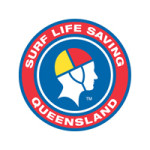
Surf Life Saving Queensland
Emergency support functions
As outlined in the roles and responsibilities below.
Role
Provide support to all agencies during the response phase of any disaster event. SLSQ works proactively with all emergency services and provides qualified lifesaving personnel to ensure the Queensland public are kept safe during natural disasters.
SLSQ makes all surplus lifesaving resources available for use with qualified personnel to assist across the Queensland coastline.
Responsibilities
- Provide advice on coastal and aquatic rescue management to government (state and local) agencies across the state
- Provide a network of support and advice to the QDMC, DDMGs and LDMGs in relation to disaster and emergency response via volunteer surf life savers. professional lifeguards. and the Westpac Life Saver Helicopter Rescue Service
- Provide inflatable rescue boats (IRBs) for use in flood waters, or assist with the relocation of people, emergency service personnel and gear / equipment.
- Provide two twin engine rescue helicopters fitted with winches, located on the Sunshine Coast and Gold Coast respectively
- Provide members to assist QPS, SES or QFES with door knocking and welfare checks in isolated or affected areas
- Supply suitably qualified personnel with current Surf Lifesaving Awards and appropriate personal protective equipment (PPE)
- Maintain a primary focus on Queensland’s patrolled beaches and only supply personnel and equipment not operationally required during the disaster period
- As the primary authority for closing beaches in Queensland, SLSQ will work with all local councils and land managers to ensure proactive and concise messaging about beach closures and associated hazards
- Actively collect and collate information through SLSQ’s State Operations and Communications Centre (SOCC) (which coordinates and monitors 39 coastal cameras and a private radio network from Port Douglas to Tweed Heads) and use existing media channels for key messaging.
Sealink/Stradbroke Ferries
Emergency support functions
Under review.
Role
Under review.
Responsibilities
Under review.

Seqwater
Emergency support functions
Responsible for policy, planning and regulatory solutions in partnership with our stakeholders to support safe, secure and reliable water supply.
- Develop and maintain emergency management plans to manage their own assets and consumer responsibilities during a disaster or emergency event
- Manage a wide range of water incidents dam safety emergencies.
Roles
Seqwater is a statutory authority of the State Government of Queensland that provides bulk water storage, transport and treatment, water grid management and planning, catchment management and flood mitigation services to South East Queensland.
Seqwater provides bulk water for the operation of the SEQ Water Grid including dams, weirs, conventional water treatment plants and climate resilient sources of water through the Gold Coast Desalination Plant and the Western Corridor Recycled Water Scheme. Seqwater manages 26 dams across the region and operates Wivenhoe and Somerset and North Pine as dams to provide flood mitigation for Ipswich and Greater Brisbane.
Responsibilities
- Seqwater is the key liaison for the State, local government and emergency services for all water related emergencies or incidents in SEQ
- The SEQ Water Grid provides Seqwater with the ability to move drinking water across the region if its assets are impacted by weather or emergency events
- Develops Emergency Action Plans (EAPs) for all of their referable dams as per legislative requirements
- Develop the Flood Mitigation Manual for Wivenhoe, Somerset and North Pine flood mitigation dams
- Provides notifications and warnings to population at risk immediately downstream of their referable dams as per actions contained within their approved EAPs
- Seqwater provides a free dam release notification service and associated App to provide the community with up to date information on dam releases, water supply and recreation during emergencies or incidents
- Work with and provide timely and accurate information to State, District and Local disaster management groups where required to manage the consequences of a water supply or dam safety incident
- Seqwater operates two purpose built Emergency Operations Centres (Brisbane and Ipswich) to host its flood operations team, network control and its incident and management teams. The centre provides updated SITREPS during emergencies and incidents for the State, local government and emergency services and will have senior management and media resources at the SDCC as required.
Energex
Emergency support functions
- Responsible for policy development reform and regulation of the Queensland energy sector to ensure cost-effective, secure and reliable energy supply
- Registered participants in the National Electricity Market (NEM)
- Develop and maintain emergency management plans to manage their own assets and consumer responsibilities
- Manage a wide range of incidents and electricity emergencies without jurisdictional involvement.
Roles
Powerlink is a State Government Owned Corporation (GOC), which owns, develops, operates and maintains the high voltage electricity transmission network that extends 1700 km from north of Cairns to the New South Wales border. Its network comprises 15,500 circuit kilometres of transmission lines and 141 substations.
Energy Queensland is a State Government Owned Corporation (GOC), which owns and operates the electricity distribution network in Queensland, with Energex network in the south-east and Ergon Energy network in regional Queensland. Energy Queensland also owns and operates 33 stand-alone power stations that provide supply to isolated communities not connected to the main electricity grid.
Energy Queensland and Powerlink have developed protocols for response to disasters or significant incidents where the assets of one or both organisations are impacted.
- Monitor disaster’s and emergency events at local, district and state levels in collaboration with DNRME
- Each organisation provides a liaison officer function to the State Disaster Coordination Centre to attend/provide information and advice on the impacts of emergency events regarding electricity services as they affect Queensland
- Contribute to the DNRME situation reports for all levels during activation
- Facilitate actions within, and across the Electricity sector in response to an emergency event
- Electricity carriers manage their own emergency response arrangements and support is provided through the SDCC when required.
Responsibilities
- Powerlink
- Operate the electricity transmission network in accordance with the Electricity Act, the National Electricity Rules and Law, the conditions of Powerlink’s transmission licence and other relevant state legislation
- Work with DNRME, Energy Queensland and AEMO to ensure that electricity demand and electricity supply in Queensland (and any shortfalls) are managed appropriately as part of the National Electricity Market (NEM), including acting as the Queensland jurisdictional contact for the NEM power system emergency management procedures overseen by AEMO for very significant disruptions.
- Inform on timelines for restoration on the transmission network
- Manage emergencies under an all hazards approach such that the safety of the public, employees and contractors and the minimization of potential environmental harm and damage to assets is prioritised
- Work with State, District and Local disaster management groups where required to manage the consequences of a disruption to Powerlink’s transmission network and provide timely and accurate information
- Powerlink has its own field staff in South East Queensland and contracts Energy Queensland to provide field response in the rest of state, with all operations directed from Powerlink’s office in Brisbane. Powerlink has a range of equipment to support rapid restoration of the network, including temporary transmission towers and has agreements with aerial service providers to deploy equipment and personnel at short notice across the state for damage assessment and event response
- Energy Queensland (Ergon and Energex)
- Energy Queensland takes an all-hazards approach to the preparations and response to natural and man-made disasters. As a response agency, Energy Queensland works to restore any supply interruptions to the electricity distribution network across Queensland
- Develop an Electricity Restoration Plan operational Plan based upon impact assessments in affected locations that align business operational plans
- Work with State, District and Local disaster management groups where required to manage the consequences of disruption to Energy Queensland’s networks and provide timely and accurate information
- Energy Queensland also has an electricity retailer, Ergon Energy Queensland that sells electricity to over 746,000 customers in regional Queensland
- Energy Queensland has a combined field workforce of 4,400 (including design, construction, maintenance, inspection and vegetation workers) who can be deployed as necessary for disaster response operations
- Energy Queensland has a variety of mobile generators and support equipment that can be deployed into impacted communities to deliver temporary supply while the network is restored following a natural disaster event. Field crews, vehicles, generators, and equipment are mobilised prior to cyclones to support the rapid restoration of electricity supply to impacted communities
- The combined Ergon Energy and Energex networks distribute electricity to 2.2 million connected customers and nearly 750,000 regional Queensland retail customers.
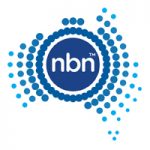


Telecommunications – Department of Housing and Public Works (DHPW)
Emergency support functions
- telecommunications services
- land line and data communications, mobile communications
- backbone data networks
- telecommunications recovery.
Roles
These roles and responsibilities relate to the telecommunications earners themselves as they interact with DHPW, the telecommunications lead agency. The State Disaster Coordination Group currently engages with the three main earners, Broadband Network (NBN) Co, Telstra and Optus.
Responsibilities
- NBN Co
- NBN Co operates a national wholesale-only open-access broadband network and provides services to retail service provider phone and internet companies, who in turn provide broadband services, over the NBN network, to their end user customers
- NBN Co uses a variety of broadband access technologies, including the following NBN fixed line connections (which use a physical line running to the premises).
- fibre to the premises (FTTP)
- fibre to the node (FTTN)
- fibre to the basement (FTTB)
- hybrid fibre coaxial (HFC).
- NBN Co also uses the following technologies which are used mostly in regional and remote areas
- fixed wireless
- Sky Muster™ Satellite.
- Optus
- Optus operates as a mobile phone / data provider for its customers. It also provides this capability to other resellers
- Optus has an extensive data network that covers the eastern sea board and satellite facilities that cover the state
- Optus is a reseller of NBN services.
- Telstra
- Telstra operates as a mobile phone / data provider and provided fixed lines services for its customers. It also provided this capability to other resellers
- Telstra has an extensive data network that covers Queensland
- Telstra is a reseller of NBN services.
APA Group (Natural Gas)
Emergency support functions
Under review.
Role
Under review.
Responsibilities
Under review.
Quandamooka Yoolooburrabee Aboriginal Corporation (QYAC)
Emergency support functions
Under review.
Role
Under review.
Responsibilities
Under review.
Support organisations
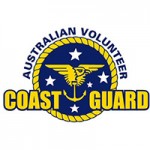
Australian Coastguard
- Promote safety in the operation of small craft
- Guard the coast
- Provide community education
- Provide search and rescue functions for sinking vessels or vessels in distress as well as for persons who may be lost or missing at sea or in other waterways
- Provide transport and logistics support as required
- Perform Medivac responses to islands and beaches
- Maintain radio safety watches along many parts of the coastline.
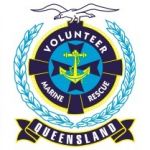
Volunteer Marine Rescue
- Primary purpose is to save the lives of people in distress in Moreton Bay and surrounding areas
- Provide a “first response” emergency service 24 hours a day 7 days a week
- Maintain a vessel monitoring service
- Provide search and rescue functions for sinking vessels or vessels in distress as well as for persons who may be lost or missing at sea or in other waterways
- Provide transport and logistics support as required
- Perform Medivac responses to islands and beaches.
Authority of Members
The members of the Redland City LDMG and Liaison Officers from each organisation have:
- The authority to commit their respective organisation to the Redland City LDMG’s decisions
- The ability to effectively navigate their respective organisations to seek approval for the commitment of their organisation resources
- A sound understanding of the Local Disaster
- Management Plan.
Training and Exercises
In an effort to provide an effective training and exercising program, Redland City Disaster Planning and Operations Unit works closely with QFES, QPS and other government disaster management agencies to provide a coordinated training program which includes:
- Local Disaster Management Group training
- Local Disaster Coordination Centre training
- Exercises to evaluate the capacity of the Local Disaster Management Plan, the Business Continuity Plan, the Local Disaster Management Group, and the Local Disaster Coordination Centre.
The Disaster Planning and Operations Unit within Redland City Council maintains a record of training activities and relevant member qualifications as required by audit processes.
Special Projects and Sub-committees
The Chair of the Redland City LDMG may establish Special Projects and/or Sub-Committees where circumstance require to address specific functions within its disaster management arrangements across the four principles of prevention, preparedness response and recovery.


